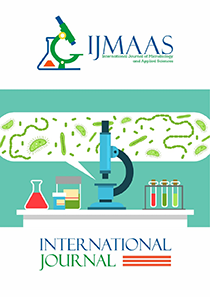First Report of Post-Harvest Rots of Strawberry Fruits (Fragaria ananassa Duch.) in Plateau State, Nigeria
Vol 2, 2023
KEYWORDS
Strawberry (Fragaria ananassa), Fungi, Anthracnose, Prevalence, Mycotoxin occurrence, Plateau State
Abstract
Strawberry (Fragaria ananassa Duch.) is emerging as an economically important commercial fruit crop in Plateau State of Nigeria. Strawberries like most fruits is prone to fungal spoilage, and are particularly perishable, especially after harvest, even if they are apparently healthy at the time of harvest. This study was undertaken to isolate and identify the fungi associated with contamination of strawberry fruits commonly sold in Jos metropolis, Plateau State. Pure fungal isolates were identified by tissue isolation and single-spore isolation using standard microbiological methods. Data collected were analyzed using simple descriptive statistics (frequency and mean) and analysis of variance. Twelve (12) fungal isolates (Aspergillus flavus, Aspergillus fumigatus, Aspergillus niger, Collectotrichum gloeosporioides, Schizosaccharomyces pombe, Penicillium meriotylum, Mucor spp, Geotrichum candidum, Botrytis cinerea, Fusarium spp, Alternaria alternata and Rhizopus stolonifer) were identified. Most of the fungi species were identified with varying percentage prevalence across the markets; Collectotrichum gloeosporioides had the highest 18 (15.0%) frequency of occurrence followed by Fusarium spp 15 (12.5%) and Botrytis cinerea 13 (12.8%) while R. stolonifera had the least 4 (3.33%). However, there was no significant difference (P<0.05) in the fungal load of the various markets studied. The main strawberry pathogens associated with the strawberry fruit rots in this study are of economical and public health significance. This is the first ever detailed study of its kind on the status of the prevalence of strawberry disease and its distribution on this relatively new crop in Jos, Plateau. Some strains of Aspergillus and Fusarium have been reported to produce potent mycotoxins that can be harmful to human beings and animals. Thus, management strategy must be taken through improved technology-based preservation methods that target keeping the quality of strawberry fruit from farms, handling and transportation to storage.
Current: Vol. 4, Issue 1, 2025

Call for papers
The International Journal of Microbiology and Applied Sciences warmly welcome your valuable articles for publication.
